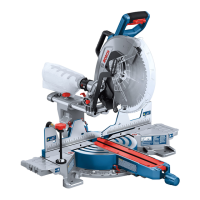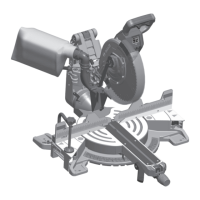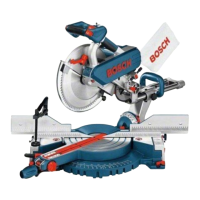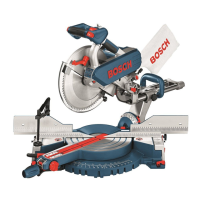44
Special Cuts
Cutting bowed material and round material are
only two examples of special cuts.
Use clamping position that
does not interfere with
operation. Before switching on, lower head
a
ssembly to make sure clamp clears guard and
head assembly.
Be aware of the path of the
saw blade. Make a dry run
with the saw Off by conducting a simulated
cutting cycle, and observe the projected path of
the saw blade. Keep hands at least six (6) inches
away from the projected path of the saw blade.
To provide sufficient
(minimum 6") spacing from
hand to saw blade, extend the sliding fence and
base extensions when making extreme bevel,
miter or compound cuts.
CUTTING BOWED MATERIAL
If workpiece is bowed or warped, clamp it with the
outside bowed face toward the fence. Always
make certain that there is no gap between the
workpiece, fence and table along the line of cut.
Bent or warped workpieces can twist or rock and
may cause binding on the spinning saw blade
while cutting (Fig. 49).
CUTTING ROUND OR IRREGULARLY SHAPED
MATERIAL
For round material such as dowel rods or tubing,
always use a clamp or a fixture designed to clamp
the workpiece firmly against the fence and table.
Rods have a tendency to roll while being cut,
causing the blade to “bite” and pull the work with
your hand into the blade (Fig. 50).
Fig. 49
Fig. 50
Saw Operations
Sliding
Fence
Sliding
Fence
C
lamp
Bowed
Material
Clamp Round
Material
No Gap at
this Point

